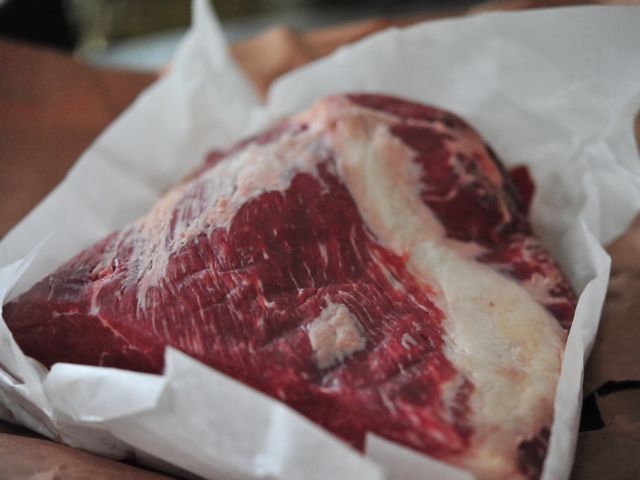Torrential rains accompanied by great gusts of wind have brought many of the fall leaves cascading down in whirling colors. Now the birds are more visible, darting around, and you can see the squirrels—red and grey—perched on branches, nibbling pinecones like corn on the cob. The apples stand out like ornaments on the trees, tempting the deer, which are gorging themselves silly on the sweet fruit. We went back to Julia's ancient orchard to harvest a few more; I wish I knew what they are—2 green and 2 red, heirloom varieties for sure, each more delicious than the next. I decided to cook down their wonderful, winey essence into that most traditional of all preserves: apple butter. It's essentially just a highly concentrated form of apple sauce, produced by long, slow cooking of apples with cider or water to a point where the sugar in the apples caramelizes, turning the rich stew a deep brown. There's no actual butter involved in the product; the term refers only to the thick, soft consistency, and its use as a spread for breads.
Read More...
Twitter @glutton4life
3.7.11 Meaty Monday: Corned Beef with Vegetables
You don't have to be Irish to love corned beef. Eastern European Jews are great connoisseurs of all manner of boiled meat, and New York deli is renowned for its sandwiches piled high with thin slices of this pink, juicy meat. But St. Patrick's Day is coming up a week from Thursday, and that gives you plenty of time (you only need about 5 days, which means you should get started by Saturday at the latest), and the perfect reason, to make your own this year. In its original, peasanty guise, this traditional fodder is as much about the vegetables: turnips, rutabagas, carrots, onions, parsnips, cabbage and plenty of spuds, of course. Not to mention delicious mustards and horseradish sauce. It's a dish meant to usher in spring by using up all those roots stored for the winter. The date for celebrating St. Patrick—a 5th-century English missionary who converted a load of pagans to Christianity—fell during the fasting season of Lent, but prohibitions against eating meat were lifted so the Irish could celebrate their patron saint with dancing, drinking and feasting on the traditional meal of Irish bacon and cabbage. If you make a big hunk of meat, you can share it with lucky friends, or hoard it to make such delectable offshoots as red flannel hash (with beets) and Reuben sandwiches (with homemade sauerkraut).
Read More...
Read More...









